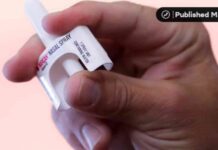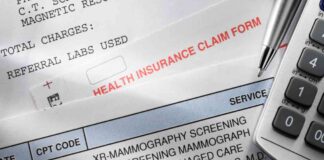Ears are truly remarkable organs that play various essential roles in our daily lives. They not only enable us to hear, maintain our balance, and regulate air pressure changes, but they also contain over 200 pressure points each. In the realm of traditional Chinese medicine, these pressure points are believed to be interconnected with other body parts and organs through nerves and blood vessels within a microsystem. The human body as a whole is said to possess more than 2,000 of these pressure points, and when stimulated correctly—whether through acupuncture needles or direct pressure—these acupoints have the potential to alleviate pain and discomfort associated with a wide range of ailments.
One intriguing acupressure technique that has gained popularity in recent times is ear seeding. This ancient practice, which dates back over 2,000 years, involves placing small seeds from the Vaccaria plant onto specific points on the inside and outside of the ears. Today, most practitioners utilize tiny metal beads attached to adhesive stickers for this purpose. Known formally as auricular acupressure, ear seeding is essentially a needle-free form of acupuncture that individuals can easily administer at home. It is based on the concept of meridians, which are energetic pathways within the body through which vital life force, known as qi, is said to flow to maintain emotional and physical well-being.
While some may dismiss ear seeding as just another wellness trend, numerous studies suggest that this practice can help reduce pain intensity, enhance daily functioning, and decrease the need for pain medications like opioids among individuals with various conditions such as cancer-related fatigue, knee osteoarthritis, anxiety, insomnia, nausea, constipation, chronic headaches, and even brain injuries. Research has shown that acupuncture in the ear, which targets the same points as acupressure, can elicit changes in brain activity, providing evidence for a connection between the body, ear, and brain. According to studies utilizing functional magnetic resonance imaging, these brain changes may influence how the central nervous system processes pain and trigger the release of natural pain-relieving endorphins.
As a health reporter intrigued by the potential benefits of ear seeding, I embarked on my own ear seed journey with a healthy dose of skepticism. Despite my initial reservations, my research uncovered few red flags and several promising findings. While many studies on auricular acupressure are randomized controlled clinical trials, the gold standard in scientific research design, they often involve small sample sizes and include control groups that receive sham treatments to assess the true impact of ear seeding on pain relief. Nevertheless, the evidence regarding the mechanisms and benefits of this treatment remains somewhat limited, as noted by Gudrun Snyder, a doctor of acupuncture who owns a Chicago-based clinic specializing in Eastern medicine treatments and ear seed kits.
Snyder explained that there have been relatively few studies on ear seeding due to Western medicine’s hesitancy to fully embrace it, and many of the existing studies have yet to be translated into English. However, the rise of social media has played a significant role in increasing awareness and acceptance of acupuncture and acupressure practices, leading to a growing interest in the scientific benefits of these traditional healing modalities. The hashtag #earseeds has garnered 130 million views on platforms like TikTok, where individuals document their experiences receiving ear seeds from professionals and demonstrate self-application techniques at home.
Dr. Ellen Rosenquist, a physician specializing in pain management at the Cleveland Clinic, expressed her support for ear seeding as a potential treatment for various pain conditions. She emphasized that since the entire body is believed to be represented on the ear, almost any pain condition can potentially be addressed using auricular acupuncture points. In her opinion, ear seeding is equally effective as traditional acupuncture and may even offer advantages in certain situations. Rosenquist stressed the importance of considering ear seeding as a non-invasive treatment option before resorting to more invasive procedures or medications with potentially adverse side effects.
My personal experience with ear seeding for lower back pain began amidst a lingering injury that had been affecting my daily activities for months. Given a set of ear seeds to try out, I embarked on the treatment with cautious optimism. After familiarizing myself with an ear seed map and cleaning my ears with alcohol, I carefully placed the seeds on specific pressure points corresponding to my lower back, stress, and focus areas. Despite experiencing heightened sensitivity and discomfort in the treated areas, I persevered with the treatment for several days before ultimately removing the seeds due to excessive ear sensitivity.
A study conducted by researchers at the University of Pittsburgh in 2013 investigated the effects of a four-week ear seeding treatment on individuals with chronic lower back pain. The results indicated a significant reduction in both worst pain intensity and overall pain severity among participants who received the therapy, with these benefits persisting at a one-month follow-up. In contrast, those in the sham group reported only marginal improvements in pain intensity. While participants from both groups experienced ear sensitivity and soreness, they found the discomfort to be tolerable compared to their back pain.
Despite the mixed results of my initial ear seeding experience, I remained open to the potential benefits of this treatment, especially when used in conjunction with other therapies. Snyder emphasized that ear seeds can serve as a complementary treatment option for individuals dealing with chronic pain or sleep disturbances, although she recommended exploring additional therapies for deep-seated issues. The light touch of ear seeds makes them accessible to a wide range of individuals, with minimal risk of adverse reactions and the potential for significant pain relief.
As I continued my ear seeding journey, I encountered both challenges and moments of progress. While the initial discomfort and sensitivity of the ear seeds posed a temporary hurdle, I found that over time, the pain began to subside, albeit gradually. Although I did not experience immediate relief from my lower back pain, I recognized the importance of allowing sufficient time for the treatment to take effect. Some individuals may notice pain relief within minutes of applying ear seeds, while others may require weeks or even longer to experience tangible benefits. Regardless of the timeline, the key is to listen to your body and adjust the treatment accordingly.
Ear seeding is a relatively straightforward and low-risk practice that can be easily incorporated into one’s wellness routine. Adverse reactions are rare, and incorrect application of the seeds is unlikely to result in injury. However, it is essential to exercise caution when applying ear seeds to avoid overstimulation of pressure points. Seeking assistance from a professional or enlisting the help of a trusted individual can ensure proper placement and maximize the effectiveness of the treatment.
In conclusion, the journey of exploring ear seeding for lower back pain has been both enlightening and challenging. While the initial discomfort and sensitivity of the ear seeds posed a temporary obstacle, the gradual reduction in pain over time offered a glimmer of hope for potential relief. As I continue to integrate ear seeding into my wellness regimen alongside acupuncture and physical therapy, I remain optimistic about the long-term benefits this practice may offer. Whether it’s the placebo effect or a genuine physiological response, the value of exploring alternative therapies like ear seeding lies in their potential to alleviate pain and improve overall well-being. As the field of integrative medicine continues to evolve, practices rooted in traditional healing modalities such as ear seeding may hold promise for individuals seeking natural and holistic approaches to managing pain and promoting wellness.

















